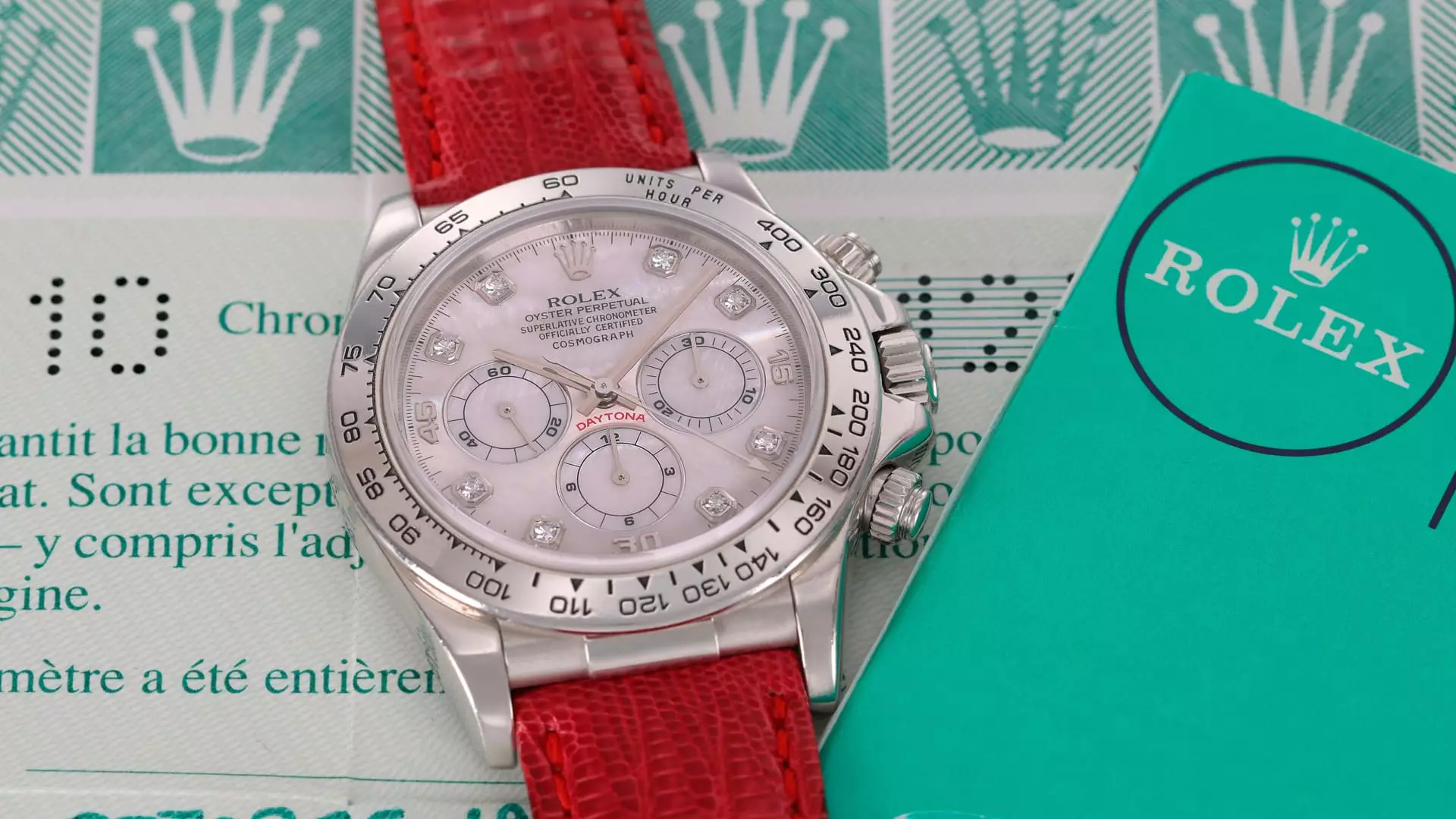In the world of high-end horology, few items can inspire the kind of fervor and reverence that surrounds the 1999 Platinum Rolex Daytona. Heading to auction at Sotheby’s Geneva, this exceptional timepiece, which could fetch up to $1.7 million, exemplifies not just watchmaking skill but the artistry and prestige afforded to luxury items that transcend their mere function of telling time. This specific model, made from platinum—a material surprisingly absent in Daytona productions until 2013—defines not only rarity but exclusivity in an age where personalization is becoming the hallmark of luxury. With its face adorned with mother-of-pearl and intricately set with ten diamonds, it is a stunning representation of how far Rolex has come and the unique path taken by this particular watch.
The Mythology Behind its Creation
What sets this Rolex Daytona apart from its contemporaries is its genesis; it was privately commissioned and custom-made for an unnamed client. This is an exceptional circumstance, as Rolex has historically shunned such bespoke endeavors. Pedro Reiser, a watch specialist at Sotheby’s, characterizes this watch as an “unusual commission.” The rarity is compounded by the fact that only four of these luxurious pieces exist, made exclusively for one family, each with distinct dial characteristics. The one up for auction is the last of its kind to be sold, making it not just a watch, but a piece of family history. The previous models have sold for astonishing sums, upwards of $3 million, demonstrating that when it comes to luxury collectibles, their monetary value is often only a secondary consideration to their heritage.
The narrative surrounding this watch continues to evolve. There were whispers that Patrick Heiniger, Rolex’s CEO during an era of monumental growth and transformation from 1992 to 2008, may have commissioned this very piece or perhaps even worn a similar model. Though Reiser deftly dismisses these notions as “more of a myth,” the allure of a potential connection to a prominent figure only adds to the aura surrounding the timepiece. In a climate where storytelling can elevate items from mere commodities to sought-after legends, such anecdotal connections are invaluable.
A Subtle Revolution in Watchmaking
The creation of a platinum Daytona in 1999 radically challenges our perception of Rolex’s timeline. Before the introduction of platinum, the Daytona was a mere three-material offer—stainless steel, yellow gold, and white gold. The fact that this exclusive piece exists at this early stage in Rolex’s history is a testament to the brand’s pioneering spirit—an ethos that is often overshadowed by its current status as a luxury giant. The sophisticated combination of the diamond-set dial and unprecedented materials used further cements its position as an icon of the brand’s innovative legacy.
Moreover, from a financial perspective, this piece is not just a luxurious indulgence but also a smart investment. The Knight Frank Luxury Investment Index cited watches among the top-performing luxury investment categories, renowned for their staggering 52.7% growth over five years. This rising trend is largely fueled by a new generation of collectors—wealthy, diverse, and under 30—who see rare timepieces not merely as accessories but as tangible assets capable of appreciating significantly in value. The growing market rich with international buyers only augments the desirability of timepieces like the Platinum Daytona, marking an important shift in how luxury is perceived and pursued.
Luxury Beyond Time
In sum, the 1999 Platinum Rolex Daytona is nothing short of a masterpiece, blending exquisite craftsmanship with a rich tapestry of history and exclusivity. As it readies to captivate audiences at auction, it symbolizes not just the evolution of a brand but also the broader trajectory of luxury itself, where rarity and personal stories interweave to define worth. The narrative of this watch serves as a reflection of society’s grappling with luxury—what it means to rarefy time itself and invest in things that withstand the passage of time. Whether one looks at it as an investment strategy or as an item of aesthetic significance, there is undeniable power in this singular artifact from Rolex, reminding us that true luxury lies not in possession, but in the stories we share and the memories we create.

